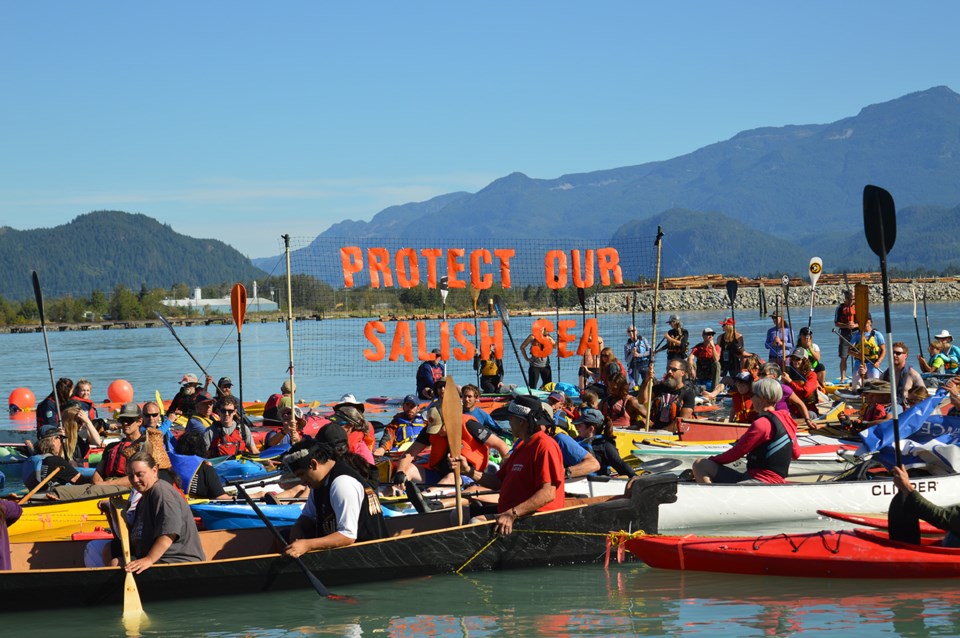On Sunday morning, activists gathered on the water to oppose industrial development around Howe Sound.
Local environmental group My Sea to Sky organized a flotilla with the help of Skwomesh Action, Backbone Campaign, Patagonia Vancouver and the Howe Sound Biosphere Region Initiative to launch its new campaign, Protect Howe Sound.
Around 100 protesters gathered on the St’a7mes (Stawamus) Waterfront, a traditional village of the Squamish Nation people, to launch canoes, paddle-boards and kayaks into the sound.
During Sunday’s protest, Skwomesh Action welcomed activists onto the traditional territory of the Squamish Nation and brought a traditional dugout canoe named Skw7ils to participate in the protest.
Once on the water, the activists got into a heart formation and deployed a 150-foot long banner that read “Protect Howe Sound.”
Tracey Saxby, My Sea to Sky’s executive director, explained that the Protect Howe Sound campaign is a way to simultaneously oppose multiple industrial projects in the area.
Saxby felt the opposition to the “reindustrialization of the Howe Sound” is important because the area is beginning to redevelop its biodiversity and health.
She believes that the area’s recent gains are threatened by industrial projects such as the proposed Burnco aggregate mine and the approved Woodfibre LNG export facility.
In an effort to protect what they now see as a recovering ecosystem, My Sea to Sky is working with the Howe Sound Biosphere Region Initiative to try and designate the sound as a UNESCO biosphere reserve. The UNESCO classification is given by the United Nations and provides a framework to reconcile the desires for conservation and land use.
Joyce Williams, a founding member of Skwomesh Action – an activist organization made up of members of the Squamish Nation – said that for her, the flotilla was simultaneously a visual statement and way to reconnect with the traditional land of the Squamish Nation. Occupying the land in opposition of industrial development is important to Williams, who says that Squamish Nation youth have recently started to use Howe Sound in their traditional ways, which she said is threatened by industrial projects.
Mike Powell, chief executive officer for Burnco, compared the company’s aggregate mine to previous industrial projects in Howe Sound, such as the now-closed Britannia Mine. He described Burnco’s operations as quite different and “relatively gentle.”
Powell went on to say that, according to extensive studies, the proposed aggregate mine’s operations have been found to “have no adverse effects on wildlife.”
Powell also explained that by listening to feedback from the project’s opponents, Burnco has been able to make some “pretty significant changes to the project’s design,” improving it overall.
When asked if he was optimistic about the project going through, Powell said that, although there is still some work to do, he is hopeful about its approval.
In response to the protest, Woodfibre LNG’s Jennifer Siddon said in an email, “We thought it was a clever marketing campaign by a U.S. retailer.”



